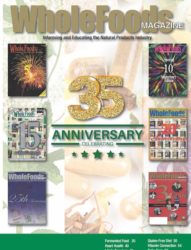In 2017, the release says, the Food Chemicals Codex (FCC) released a monographed standard to help promote quality krill oil identification and purity testing. Included in these requirements, along with standards for EPA, DHA, phospholipids and astaxanthin, is a limit for inorganic arsenic, the form of arsenic toxic to humans. However, the method defined in the FCC monograph is not able to accurately differentiate between the chemical species of arsenic, and the complexity of the krill oil matrix requires suitable sample preparation to liberate arsenic species and allow for precise quantitation of inorganic arsenic.
Related: NOW Awarded Top Workplaces 2019 Honor Omega -3, -6, -9 Update Validated Test for Quantifying Insoluble PACs in Cranberries Published
The NOW Methods Development team conducted a study to develop and validate a procedure for a more accurate determination of inorganic arsenic in krill oil samples, and determined that a more specific method is HPLC-ICP-MS, as described in the study.Aaron Secrist, VP of Quality and Regulatory Affairs, said in the release: “We determined that available test methods did not go far enough in ensuring that krill oil we were sourcing for our supplements met our purity and safety standards. We published the method in keeping with NOW’s long-standing practice of sharing test methods we develop with the industry.”










